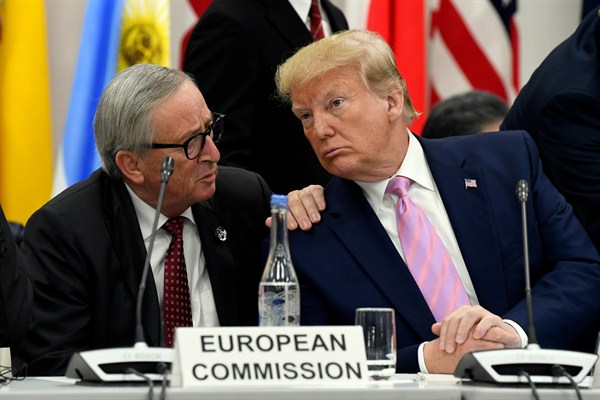After the United States and China signed their “phase one” trade deal in mid-January, it seemed that the European Union might be the next target in President Donald Trump’s trade wars. At the time, the White House was threatening to increase tariffs amid the ongoing dispute over EU subsidies to Airbus and impose new tariffs over France’s proposed tax on digital service providers, while still holding out the possibility of tariffs on more than $40 billion in automobile imports from Europe. Since then, the Trump administration has held its fire in those disputes, and the prospects for a bilateral trade agreement seem to be brightening. But no one following trade policy for the past three years can discount the possibility that the dark clouds on the horizon could break into a storm at any time.
On the one hand, Trump’s seeming desire to hit the pause button on his trade wars in order to protect the U.S. economy as he faces reelection suggests an agreement with Europe is possible. On the other hand, the trade deficit with the EU hit a record in 2019 and that could trigger Trump’s ire at any moment, upending everything. If a U.S.-EU trade deal does get done, it will likely be another narrow one with limited scope. But there are still a number of obstacles to achieving even a mini-deal. The rest of the world is holding its breath to see whether or how European negotiators, in trying to strike the kind of transactional deal Trump wants, would maintain consistency with multilateral rules on nondiscrimination among members of the World Trade Organization. American farmers are also watching carefully to see how a potential deal would address agricultural trade, something the EU has resisted.
As with almost every other policy pursued under President Barack Obama, Trump discarded the comprehensive trade negotiations with the EU that had been going on for several years prior to his inauguration. In 2018, the White House imposed tariffs on most U.S. imports of steel and aluminum, including from NATO allies in Europe, purportedly for national security reasons. Again citing national security, the administration followed that up with a threat to impose tariffs on automobiles, a far more important sector for the EU.

